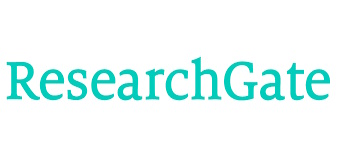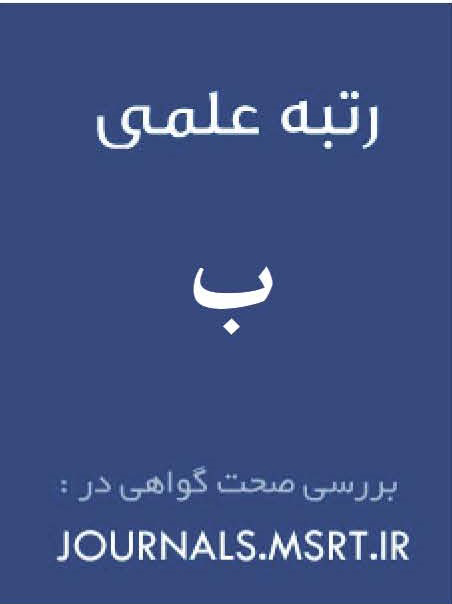Identification of Social Media Crisis Management Indicators in the Education System of Mazandaran Province
Keywords:
Crisis management, social media, Education, Mazandaran ProvinceAbstract
This study aimed to identify and conceptualize key indicators for managing crises arising from social media in the educational system of Mazandaran Province. The research was applied in purpose and qualitative in nature, employing an exploratory sequential design. First, a systematic review of theoretical foundations, domestic and international studies, and relevant policy documents was conducted. Then, through purposive sampling and based on theoretical saturation, 11 experts in crisis management, media, information technology, and education were selected. Data were collected using semi-structured interviews and analyzed through thematic analysis and a three-stage coding process (open, axial, and selective) with MAXQDA software. To refine and validate the indicators, a multi-round Delphi method with field experts was implemented. Data trustworthiness was ensured by member checking, external audit, and inter-coder agreement. Analysis revealed 130 initial codes, refined to 94 concepts and organized into 31 key components. These were grouped into seven core dimensions of social media crisis management: prevention and preparedness, crisis detection and identification, response and reaction, recovery and rebuilding, technology and information infrastructure, socio-cultural aspects, and legal and policy frameworks. The resulting conceptual model comprehensively covers the crisis management cycle from readiness to post-crisis learning. The proposed model provides an integrated framework to systematically manage social media crises in education. It supports informed decision-making, enhances media resilience, and safeguards students’ cultural and social well-being.
Downloads
References
Ansari, H., & Izadi, M. (2023). Social Media and Soft Warfare in the Field of Education: Innovative Achievements in Human Sciences Studies. Journal of Human Sciences Studies, 6(63), 1-16. https://jonahs.ir/showpaper/8446663
Bagherpour, M. (2022). The Role of School Administrators in Virtual Networks: Opportunities, Threats, and Effective Solutions. Horizons of Human Sciences, 64(15), 89-103. https://www.noormags.ir/view/fa/articlepage/1982680
Chen, L., Chen, J., & Xia, C. (2022). Social network behavior and public opinion. Journal of Information Security and Applications. https://doi.org/10.1016/j.jisa.2021.103060
Chenari, M., & Shabestani, A. (2021). Predicting the Level of Familiarity with Ethics in Cyberspace Using Media Literacy and Technological Competencies. Ethics in Science and Technology, 16(1), 155-158. http://ethicsjournal.ir/browse.php?a_code=A-10-1182-75&slc_lang=other&sid=1
Farhang, S. (2025). Presenting a Model for Enhancing Crisis Management with Emphasis on the Role of Social Media. Journal of Crisis Management, 14(1), 37-52. https://www.joem.ir/article_721106.html
Faridi Esfanjani, J., Saadati Shamire, A., & Rezaei, S. (2024). Identifying Challenges and Opportunities Facing the Educational System in Cyberspace to Overcome Crises: A Phenomenological Study. Information Technology and Communications in Educational Sciences, 56(22), 89-110. https://www.noormags.ir/view/fa/articlepage/2179211/
Figueroa, P. (2017). Disasters and Social Crisis in Contemporary Japan: Political, Religious, and Sociocultural Responses. Pacific Affairs, 90(1), 145-147. https://www.jstor.org/stable/44876158
Fornian, A., Naderpour, B., Bolandian, G., & Darabi, A. (2022). Examining the Therapeutic Role of Virtual Social Networks on Mental Health and Violence among Youth. Razi Journal of Medical Sciences, 29(8), 17-25. https://www.sid.ir/paper/1123283/fa
Ghanbari, A. (2024). Crisis Management in Education: Strategies for Educational Administrators. First International Conference on Psychology, Educational Sciences, Management, and Social Sciences, https://civilica.com/doc/2053580/
Hamid, P. D., Nurmala, M. D., & Wibowo, B. Y. (2023). The Social Media Crisis Communication Model: A Solution to the Social Media Crisis. Journal Pendidikan Indonesia Gamelan, 3(1), 114-122. https://doi.org/10.1063/5.0120756
Korn, C. (2023). Media coverage of organizations in critical situations University of Germany]. https://www.researchgate.net/publication/261362757_Media_coverage_about_organisations_in_critical_situations_-_Analysing_the_impact_on_employees
Lee, C. T., Chen, T. W., & Tsai, M. C. (2022). Dynamic weight status changes and peer lifestyles in early adolescence: A social network analysis on a longitudinal cohort of Taiwanese youth. Obesity Research & Clinical Practice, 16(6), 470-475. https://doi.org/10.1016/j.orcp.2022.10.004
Leslie, G. R., Larson, R. F., & Gorman, B. L. (2020). Introductory Sociology. Oxford University Press. https://link.springer.com/content/pdf/10.1007/978-1-349-14741-0.pdf
Li, Y., & Liu, Q. (2021). A comprehensive review study of cyber-attacks and cyber security; Emerging trends and recent developments. Energy Reports, 7, 8176-8186. https://doi.org/10.1016/j.egyr.2021.08.126
Rajabi, M., & Farahmarzi Grousi, S. (2023). Investigating the Impact of Virtual Social Networks on the Academic Performance of First-Year Middle School Students in the Sajaseroud Region for the Academic Year 2022-2023. Sixth National Conference on Innovative Technologies in Education, Psychology, and Counseling, Tehran. https://jti.atu.ac.ir/article_10679.html
Torossian, R. (2025). Exploring how crisis communication strategies adapt to the high speed of information dissemination on social media. Global Educational Studies Review, 58(1), 232-246. https://books.google.com/books?hl=fa&lr=&id=bz08DhXc4u0C&oi=fnd&pg=PP1&dq=+Exploring+how+crisis+communication+strategies+adapt+to+the+high+speed+of+information+dissemination+on+social+media.+Global+Educational+Studies+Review&ots=qVZ4jWxDJ4&sig=WJdrSiH5iJ5WpIttBU1V8vz2jvo
Torossian, R. M. (2025). Exploring the relationship between corporate reputation and the public's crisis communication on social media. Public Relations Review, 44(1), 56-64. https://doi.org/10.1016/j.pubrev.2017.12.006
Verinder, B. (2025). Examining critical crisis management skills in the educational environment. International Journal of Educational Development, 32(3), 482-492. https://journals.sagepub.com/doi/abs/10.1177/14782103221133892
Yubero, S., Navarro, R., Elche, M., Larrañaga, E., & Ovejero, A. (2017). Cyberbullying victimization in higher education: An exploratory analysis of its association with social and emotional factors among Spanish students. Computers in human Behavior, 75, 439-449. https://www.sciencedirect.com/science/article/pii/S0747563217303588
Downloads
Published
Submitted
Revised
Accepted
Issue
Section
License
Copyright (c) 2025 Seyedeh Kosar Taheri Otaghsara (Author); Reza Uosefi Saeedabadi; Maryam Taghvaee Yazdi (Author)

This work is licensed under a Creative Commons Attribution-NonCommercial 4.0 International License.






